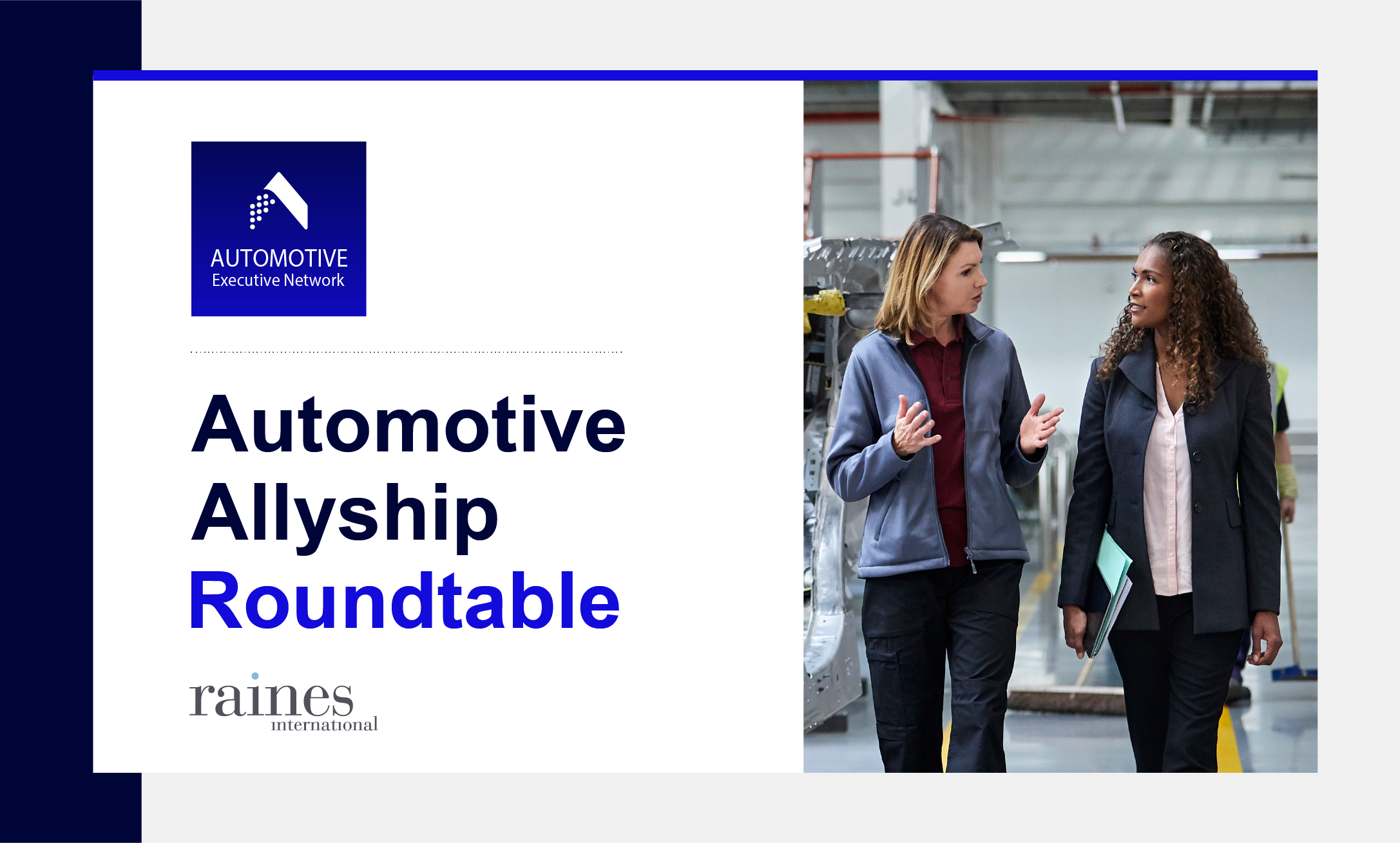
3 Takeaways from Raines’ Automotive Allyship Roundtable
Raines held its first Automotive Allyship roundtable discussion with leading diversity officers in the auto industry. We appreciated participants’ candor in sharing some of their initiatives and roadblocks for enacting DEI strategies at their companies.
At Raines, we take a neuroscience-focused approach to help organizations create more equitable talent landscapes and inclusive cultures through the enactment of accessible and applicable strategies. Allyship, the process of advocating on behalf of someone else, remains one of the most powerful tactics to champion DEI efforts. During the roundtable, we considered the neurological underpinnings of effective allyship and how it can be used to affect change on a micro and macro level.
Three key takeaways:
- Best practices advise that DEI initiatives should apply to all aspects of an organization from supplier to customer. Likewise, allyship should happen at all phases of the employee lifecycle, from the initial job post to hiring, from onboarding and development to exiting the organization. Allyship opportunities can be found at every stage to enable DEI, thereby encouraging ongoing employee engagement and facilitating retention.
- Creating inclusive environments fosters diverse talent but it alone isn’t enough. Moments of exclusion carry more weight than those of inclusion. Research shows that social exclusion triggers neurological responses similar to those of physical pain, undermining executive functioning (i.e., how individuals organize and process information, their ability to understand the perspectives of others, etc.). Companies must actively address and mitigate the moments of exclusion to fully realize the benefits of inclusion-based efforts.
- Every employee can and should take steps daily to serve as an ally for excluded parties, particularly on behalf of those who may not be physically present. By bringing these additional considerations to light, allies not only raise awareness, but pave the way to making space for more diverse viewpoints. To facilitate this, organizations must prioritize the creation of psychologically safe environments, where individuals can hear, process, and exchange feedback more effectively.